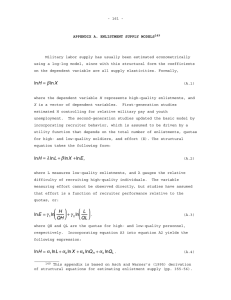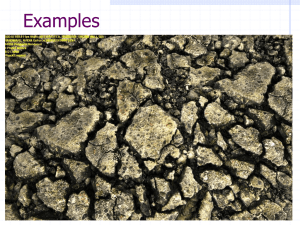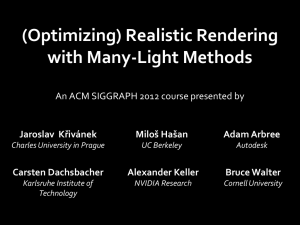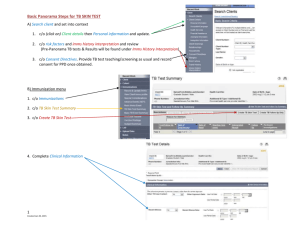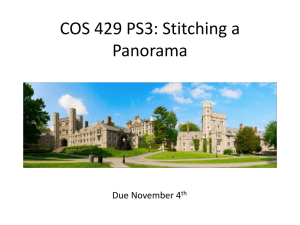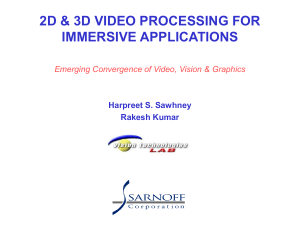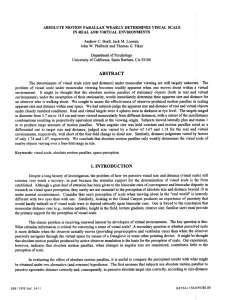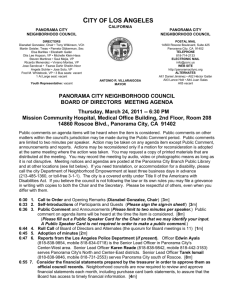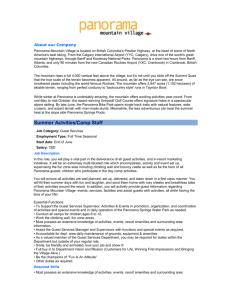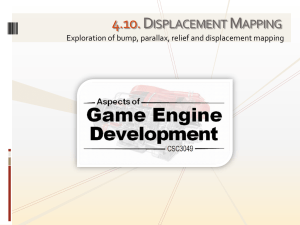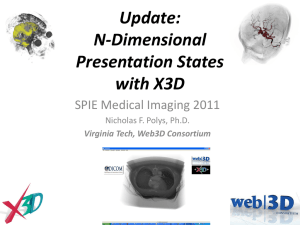Does the Quality of the Computer Graphics Matter When Judging
advertisement
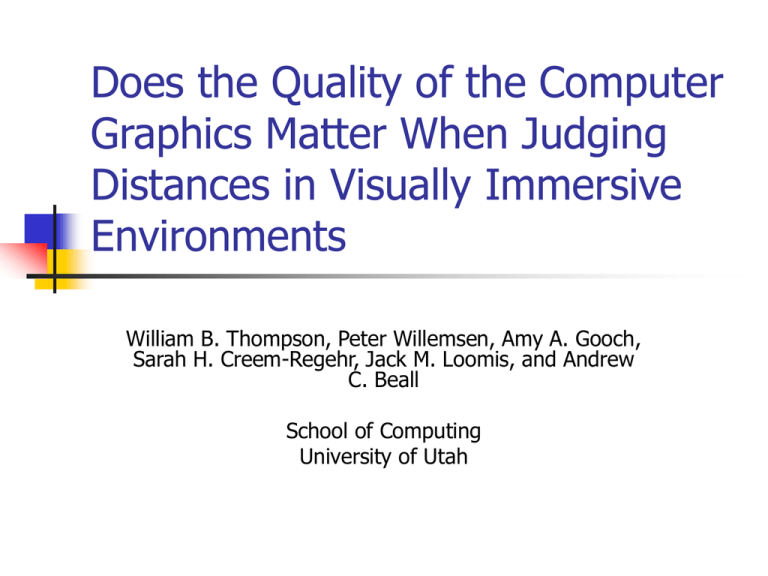
Does the Quality of the Computer Graphics Matter When Judging Distances in Visually Immersive Environments William B. Thompson, Peter Willemsen, Amy A. Gooch, Sarah H. Creem-Regehr, Jack M. Loomis, and Andrew C. Beall School of Computing University of Utah Outline Introduction Background Method Results Discussion Introduction The user’s perception of a virtual world is important. Users often perceive objects in virtual worlds as being smaller than their intended size. Does the quality of the rendered image effect a user’s ability to accurately judge distances in virtual environments? Background Types of distance perceptions Frame of reference Egocentric distance Exocentric distance Distance Metric Absolute distance Relative distance Ordinal distance Background cont. Distance from observer to observed object Personal space (arms reach) Action space (30m) Vista space (+30m) Background cont. The study in this paper deals with absolute egocentric distance judgments in action space Visual Cues for distance in question Cue a r o Accommodation X ? ? Binocular Convergence X X X Binocular Disparity - X X Linear perspective, height in picture, horizon ratio X X X Familiar size X X X Relative size - X X Aerial perspective - X X Absolute motion parallax ? X X Relative motion parallax - - X Texture gradients - X - Shading - X - Occlusion - - X Related work Previous Studies Study Distances Real CG Task Witmer and Sadowski (1998) 4.6m – 32m 92% 85% Treadmill walking Knapp (1999) 5m – 15m 100% 42% Triangulated walking Willemsen and Gooch (2002) 2m – 5m 100% 81% Direct walking Determine the distance, as seen by the observer, by having the observer perform some task that is depended on the perceived distance Method In order to investigate the degree to which image quality affects distance judgments three distinct styles of graphic rendering was used. All computer generated environments were rendered onSGI Onyx2 R12000 with two IR2 rendering pipelines Panorama Low-quality CG Wireframe Method cont. Panorama Multiple images were produced for different target distances and eye heights. Two sets of images were taken for each panorama with the camera offset laterally to give stereo viewing Rendering at no less than 40 frames/sec Method cont. Low-quality CG image Geometric detail kept simple Simple point-source lighting No shadows Rendering at no less than 30 frames/sec Wireframe image Feature edges of low-quality image. Rendering at no less than 40 frames/sec IMAGE B IMAGE A Equipment nVision Datavisor HiRes HMD Interlaced 1280 x 1024 resolution Full field sequential color 42° horizontal field of view 2 arc minutes per pixel angular resolution 100% stereo overlap InterSense IS600 Mark 2 tracker (Head tracker) Controlling real world cues The user’s own body is seldom rendered in immersive visual environments Subjects wore headphones to limit effects of sound localization Motion parallax Procedure Subjects were Given written instructions Given a demonstration of the task in space smaller than the actual experiment spatial layout Allowed to practice blind walking prior to experiment Instructed to get a good image Allowed to rotate their head about their neck Not allowed to move their head from side to side Procedure target Direction to apparent target Distance to Target Direction to target ≈70º ≈ 2.5m If the subject turn too far then they underestimated the distance If the subject does not turn far enough they overestimated the distance Results Real world Panorama Results cont. Low-quality CG Wireframe Results cont. Authors claim Confirmed previous that there studies is no showing that distance significant correlation judgments between in the real world are image quality veryand accurate the compression while distance of the judged judgments distance based on computer graphics were compressed Average judged distance as a percentage of the actual distance •Panorama ≈ 55% •Low-quality CG ≈ 44% •Wireframe ≈ 40% Discussion Authors claim that these results are strong indicators that the compression of distance judgments in virtual environments are NOT caused by a lack of realistic graphics rendering “Why can’t I see my reflection in the glass?” Possible explanations Resolution and sharpness of images in a virtual environment are limited May influence the familiar size effect or degrade the sense of presence Motion parallax was not present in the studied virtual environment Virtual environments does not give the subject a full sense of presence Focus and stereo convergence are not well controlled in HMDs Ergonomic effect associated with wearing an HMD Questions?


